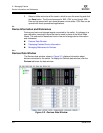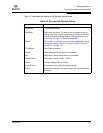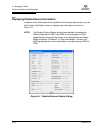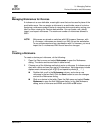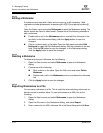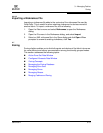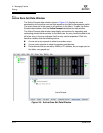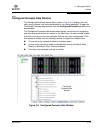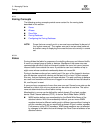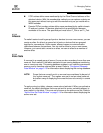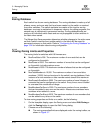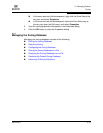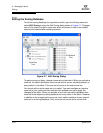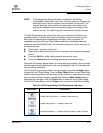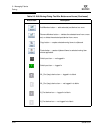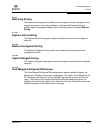
3 – Managing Fabrics
Zoning
3-16 59234-03 A
S
3.7.3
Zoning Concepts
The following zoning concepts provide some context for the zoning tasks
described in this section:
Zones
Aliases
Zone Sets
Zoning Database
Configuring the Zoning Database
3.7.3.1
Zones
Zoning divides the fabric for purposes of controlling discovery and inbound traffic.
A zone is a named group of ports or devices. Members of the same zone can
communicate with each other and transmit outside the zone, but cannot receive
inbound traffic from outside the zone. A port/device can be a member of up to
eight zones whose combined membership does not exceed 64.
Zoning is hardware enforced on a switch port if the sum of the logged-in devices
plus the devices zoned with devices on that port is 64 or less. If a port exceeds
this sum, that port behaves as a soft zone member. The port continues to behave
as a soft zone member until the sum of logged-in and zoned devices falls back to
64, and the port is reset.
A zone can be a component of more than one zone set. Several zone sets can be
defined for a fabric, but only one zone set can be active at one time. The active
zone set determines the current fabric zoning.
Membership in a zone can be defined by switch domain ID and port number,
device Fibre Channel address (FCID), or device World Wide Name (WWN).
WWN entries define zone membership by the World Wide Name of the
attached device. With this membership method, you can move WWN
member devices to different switch ports in different zones without having to
edit the member entry as you would with a domain ID/port number member.
Furthermore, unlike FCID members, WWN zone members are not affected
by changes in the fabric that could change the Fibre Channel address of an
attached device.
NOTE: Zones that are currently not in a zone set are considered to be part of
the “orphan zone set”. The orphan zone set is not an actual zone set,
but rather a way of displaying the zones that are not currently in a zone
set.



